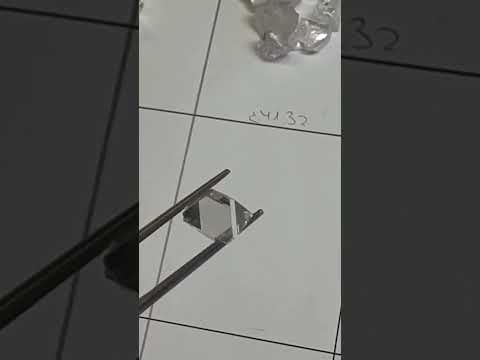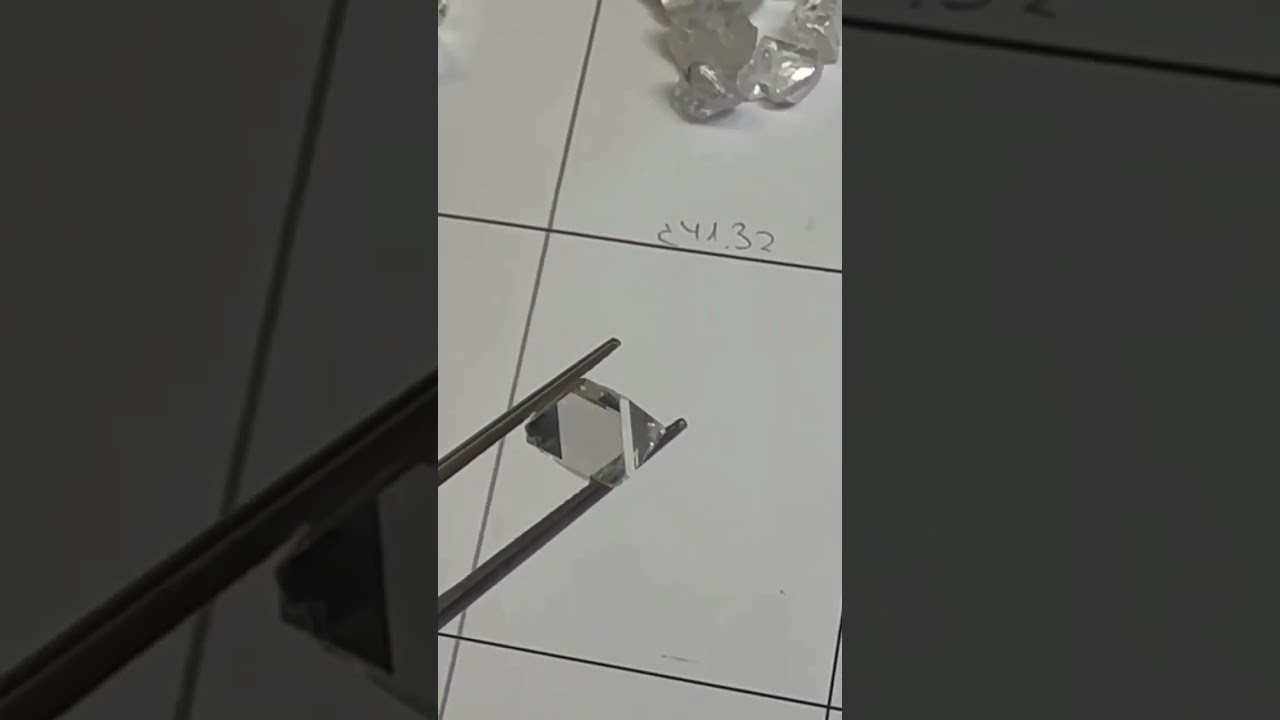Rough diamonds are a fascinating sight to behold, with their raw and unrefined beauty captivating the imagination. These natural wonders, formed deep within the Earth’s crust over millions of years, possess an undeniable allure that has captivated humanity for centuries. With their unique shapes and textures, rough diamonds exude a sense of mystery and intrigue, beckoning us to explore their hidden depths. As the light dances upon their surfaces, these unpolished gems reveal a complex tapestry of colors, reflecting the magnificent forces of nature that shaped them. Each rough diamond is a testament to the Earth’s extraordinary ability to create something so rare and precious. Holding one in your hand, you can’t help but wonder about the untold stories locked within its crystalline structure. The roughness of these diamonds serves as a reminder of their untamed origin and the immense journey they have undertaken to reach the hands of those who appreciate their natural allure. Embarking on a quest to discover the beauty concealed within rough diamonds opens up a world of wonder, where imagination and curiosity intertwine to reveal the extraordinary secrets of the Earth’s hidden treasures.

What Do Rough Diamonds Look Like?
| Characteristic | Description |
|---|---|
| Shape | Rough diamonds typically have an irregular shape, resembling a pebble or crystal. Their natural form is often asymmetrical, with jagged edges and multiple facets. |
| Color | Rough diamonds come in a range of colors, including white, yellow, brown, gray, and even rare hues like blue, green, or pink. The color intensity may vary across the stone, presenting a mottled appearance. |
| Transparency | Most rough diamonds are not fully transparent. They often exhibit varying degrees of opacity, with internal inclusions and surface imperfections affecting their clarity. These inclusions can give the diamond a cloudy or frosty appearance. |
| Surface Texture | Rough diamonds have a distinct surface texture, appearing rough and unpolished. The outer layer of the stone may display a natural skin known as a “dimpled skin” or “peau d’orange,” which is caused by the diamond’s growth process. |
| Luster | Rough diamonds possess a unique luster characterized by a subtle glow or sheen. This luster is caused by light reflecting off the diamond’s numerous facets, refracting and scattering the light rays. |
| Weight | Rough diamonds are typically measured in carats, which indicates their weight. The weight of rough diamonds can range from a few fractions of a carat to several carats, with larger diamonds being exceptionally rare. |
Unveiling the Enigmatic Beauty of Rough Diamonds
What Do Rough Diamonds Look Like?
Rough diamonds are fascinating gems that have captivated humans for centuries. These uncut, natural stones possess a raw beauty that is unlike any other gemstone. While most people are familiar with the sparkling brilliance of a polished diamond, few know what rough diamonds actually look like. In this article, we will explore the appearance of rough diamonds and delve into their unique characteristics.
The Formation of Rough Diamonds
Rough diamonds are formed deep within the Earth’s mantle under extreme pressure and heat. Over millions of years, carbon atoms undergo a process called crystallization, resulting in the creation of rough diamonds. These diamonds are then transported to the Earth’s surface through volcanic eruptions, where they can be found in various locations around the world.
The Physical Appearance
Rough diamonds have a distinct appearance that sets them apart from other gemstones. While they may not exhibit the dazzling brilliance of a cut and polished diamond, their natural beauty is undeniable. The physical characteristics of rough diamonds include:
1. Shape and Structure
Rough diamonds come in a variety of shapes and structures. They can be found as octahedrons, which are eight-sided crystals with two pyramids joined at the base, or as dodecahedrons, which have twelve sides. Other common shapes include cubes, macles, and irregularly shaped pieces. The unique shapes of rough diamonds are a result of their growth process deep within the Earth.
2. Surface Texture
The surface of a rough diamond is typically rough and unpolished. It may appear dull or pitted, with visible imperfections and irregularities. These surface features are known as inclusions, which are small minerals or other impurities trapped within the diamond during its formation. These inclusions give each rough diamond a unique fingerprint, making them truly one-of-a-kind.
3. Color
Rough diamonds can come in a variety of colors, ranging from colorless to shades of yellow, brown, and even rare hues like blue, green, and pink. The color of a rough diamond is determined by the presence of certain trace elements during its formation. While colorless diamonds are highly valued for their purity, colored rough diamonds are prized for their unique and vibrant hues.
4. Transparency
Rough diamonds are not transparent like their polished counterparts. Instead, they are typically opaque or semi-transparent. This lack of transparency is due to the presence of inclusions and impurities within the diamond. These impurities scatter and absorb light, giving rough diamonds their characteristic cloudy or milky appearance.
5. Size
Rough diamonds come in a wide range of sizes, from tiny fragments to large crystals. The size of a rough diamond is measured in carats, with one carat equal to 200 milligrams. It is important to note that the size of a rough diamond does not necessarily reflect its value. Other factors, such as color, clarity, and cut, also play a significant role in determining a diamond’s worth.
In Conclusion
Rough diamonds may not possess the polished brilliance that we typically associate with diamonds, but their natural and uncut beauty is truly mesmerizing. From their unique shapes and structures to their rough surface texture and vibrant colors, rough diamonds are a testament to the incredible forces of nature. Whether you are a diamond enthusiast or simply curious about these remarkable gems, understanding what rough diamonds look like allows us to appreciate their raw and unrefined allure.

